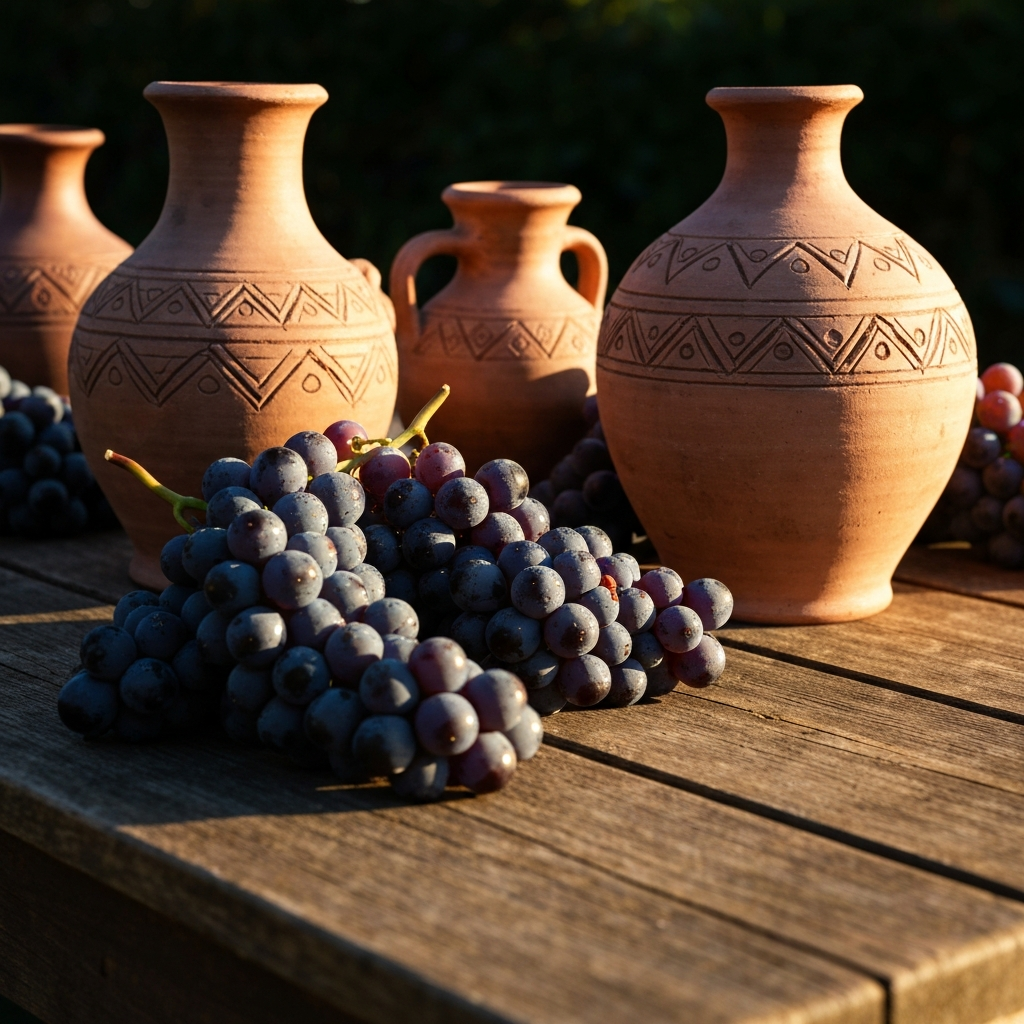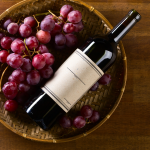Key Highlights
- Discover the many types of red wine, from the bold Cabernet Sauvignon to the elegant Pinot Noir.
- Red wine’s history spans from ancient origins to its popularization in the United States.
- Understanding a wine’s flavor profile, body, and tannin levels helps wine lovers find their perfect match.
- Exploring the right food pairing can greatly enhance your dining and wine-tasting experience.
- Moderate consumption of red wine may offer several health benefits, including supporting heart and brain health.
Introduction
Welcome to the wonderful wine world of red wine! Whether you’re unwinding after a long day or celebrating a special occasion, a glass of red wine is a classic choice. For new and seasoned wine lovers alike, the sheer variety can feel a bit overwhelming. This guide is here to help you explore different types, understand each flavor profile, and even learn about potential health benefits. Are you ready to find your next favorite bottle with confidence?
The Fascinating History of Red Wine

The story of red wine is as rich and complex as its flavor. With ancient origins dating back thousands of years, winemaking began with the simple fermentation process of crushed grapes. Each grape variety tells a unique story about the land it comes from and the people who cultivated it.
As wine ages, its character evolves, a tradition that has been passed down through generations. This journey eventually brought these cherished traditions to the United States, where a new chapter in winemaking began. Let’s explore how this beloved beverage traveled through time.
Ancient Origins and Cultural Significance
Red wine’s history starts in ancient times, where it held immense cultural significance. The earliest forms of winemaking involved little more than crushing dark-skinned grapes and allowing the natural yeasts on the skins to turn the grape juice into alcohol. This simple transformation was seen as a gift and played a central role in ceremonies, gatherings, and daily life across many early civilizations.
Regions like Southern France became synonymous with producing exceptional types of wine, establishing traditions that are still honored today. The methods may have been basic, but they laid the groundwork for the complex and diverse world of wine we enjoy.
From religious rituals to social celebrations, wine was woven into the fabric of society. Its presence at the table signified hospitality, wealth, and community, a tradition that continues to this day.
Red Wine’s Journey to the United States
The journey of red wine to the United States marked a significant expansion of its global story. European settlers brought their winemaking knowledge and favorite grape variety cuttings with them, planting the seeds for a new industry. While early attempts faced challenges, the passion for wine persisted.
It was in places like California’s Napa Valley that American winemaking truly flourished. Vintners discovered that the climate was perfect for growing classic grapes used in famous Bordeaux blends, such as Cabernet Sauvignon and Merlot. This region quickly gained a reputation for producing world-class wines that could rival their European counterparts.
As the industry grew, so did the expertise. Winemakers learned how different grape varieties thrived in American soil and how the wine ages to perfection in barrels, creating a uniquely American style that continues to evolve.
Understanding Different Types of Red Wine
For many wine lovers, exploring the different types of red wine is part of the fun. Red wine varieties are often categorized by the grape they are made from, like a Merlot, or the region they originate from, like a Bordeaux. Understanding these distinctions is the first step to finding a wine you truly love.
Each type offers a unique experience based on its body, acidity, and flavor. Are you looking for something light and fruity or rich and bold? Let’s look at some popular red wine varieties and what makes each one special.
Popular Varieties You Need to Know
When you walk down the wine aisle, you’ll see a few names pop up again and again. These are some of the most popular types of red wine, each with a distinct personality. Getting to know them will make your selection process much easier.
Many of these grapes, like Cabernet Franc, are key components in classic Bordeaux blends, but they also shine on their own. Here are a few you should definitely know:
- Cabernet Sauvignon: Known as the king of reds, it’s full-bodied with rich, dark fruit flavors.
- Pinot Noir: A lighter-bodied, elegant red with earthy notes and red fruit flavors.
- Merlot: Smooth and approachable, this medium-bodied wine is great for beginners.
- Syrah/Shiraz: A bold, spicy red with a robust character and peppery notes.
Learning about these popular varieties gives you a great starting point. From there, you can explore other exciting options like Malbec, Zinfandel, and Sangiovese.
Key Differences in Taste, Body, and Aroma
The main differences between red wines come down to their flavor profile, body, and aroma. A wine’s body refers to how it feels in your mouth—is it light and delicate or rich and heavy? Tannin levels contribute to a wine’s dryness and structure, while acidity provides a crisp, refreshing quality. These elements work together to create a unique tasting experience.
For example, a wine with a full body and high tannins, like many Cabernet Sauvignons, feels powerful and complex. It might have dark fruit flavours of black cherry and hints of tobacco. In contrast, a lighter wine like Pinot Noir has softer tannins, fruity notes of strawberry, and subtle earthy notes. Some wines, like Zinfandel, are known for a high alcohol content and a kick of black pepper spice.
Here’s a quick comparison of popular red wines to help you understand these differences:
| Wine Variety | Body | Tannin Levels | Common Flavor Profile |
|---|---|---|---|
| Cabernet Sauvignon | Full | High | Blackcurrant, tobacco, dark chocolate |
| Pinot Noir | Light to Medium | Low | Strawberry, raspberry, earthy notes |
| Merlot | Medium to Full | Medium | Plum, black cherry, vanilla |
| Syrah/Shiraz | Full | High | Blackberry, pepper, smoky oak |
Science-Backed Health Benefits of Red Wine

You may have heard that a glass of red wine can be good for you, and there’s some science to support that idea. Enjoyed in small amounts, certain types of red wine contain compounds that may offer health benefits, from promoting heart health to supporting longevity.
The key lies in the powerful antioxidants found in the skin and seeds of red grapes. What are these benefits, and how can a simple glass of wine contribute to your well-being? Let’s explore the science behind red wine and health.
Antioxidants and Heart Health
One of the most talked-about health benefits of red wine is its connection to heart health. This is largely due to the high concentration of antioxidants, particularly polyphenols like resveratrol, which are found in red grape skins. These powerful compounds help protect the lining of blood vessels in the heart.
Think of antioxidants as your body’s defense squad. They fight against damage from free radicals, which can contribute to heart disease and other health issues. The process of making red wine involves fermenting the juice with the grape skins for an extended period, which is why it has more of these beneficial compounds than white wine.
Interestingly, many of the flavor compounds in red wine, like those that create notes of black cherry or even dark chocolate, are linked to these beneficial antioxidants. So, when you’re savoring those rich flavors, you’re also getting a dose of these helpful plant compounds.
Supports Brain Health and Longevity
Beyond heart health, research in recent years suggests that red wine may also play a role in supporting brain health and promoting longevity. The star compound here is again resveratrol, which has been studied for its potential to protect nerve cells from damage and combat the effects of aging on the brain.
Enjoying red wine in small amounts has been linked to a lower risk of certain age-related cognitive declines. The antioxidants in the wine may help improve blood flow to the brain, which is essential for keeping it sharp and functioning well as you get older.
Of course, moderation is crucial. The potential benefits for longevity and brain health are associated with light to moderate consumption. It’s about finding a healthy balance and enjoying your glass of wine as part of a well-rounded lifestyle.
How to Choose the Best Red Wine for Your Preferences
Finding the perfect bottle of red wine is a personal journey. The “best” wine is simply the one you enjoy the most. To find it, you should consider the flavor profile, how the wine ages, and what kind of food pairing you have in mind. Are you eating a light salad or a juicy steak?
Knowing what you like is the first step. Do you prefer something fruity and smooth or something bold and complex? Let’s go over some tips to help you select the right red wine type for your palate and occasion.
Tips for Selecting by Flavor Profile
Choosing a wine based on its flavor profile is one of the best ways to ensure you’ll like it. Red wines can range from having juicy fruit flavors to more earthy and savory notes. A dry red wine, for example, lacks sweetness and often has more prominent tannins.
If you enjoy bold flavors and a rich texture, look for wines with high tannins, such as a Cabernet Sauvignon or Nebbiolo. These wines often have complex dark fruit flavors. If you prefer something smoother and fruit-forward, a Merlot or Grenache might be more your style.
Here are a few tips to guide you:
- For fruity and light wines, try Gamay or Pinot Noir.
- For smooth, medium-bodied wines with red fruit flavors, look for Merlot or Sangiovese.
- For bold, full-bodied wines with dark fruit and spice, choose Syrah, Malbec, or Cabernet Sauvignon.
Factors to Consider When Buying Red Wine Online
Buying red wine online at sites like payless-liquors.com opens up a world of options, from the vineyards of South Africa to your front door. However, there are a few things to keep in mind to make sure you have a great experience. Reading descriptions and reviews can provide valuable insight into the wine’s character.
Pay attention to details like the grape variety, region, and alcohol content, as these all give clues about the wine’s style. If you’re looking to explore regularly, a wine subscription can be a fantastic way to discover new favorites curated just for you.
Here are some factors to consider when shopping for wine online:
- Read the tasting notes carefully to understand the flavor profile.
- Check the vintage year, as it can impact the taste and quality.
- Look for deals on shipping or mix-and-match case discounts to get the best value.
Conclusion
In conclusion, red wine is more than just a delightful beverage; it offers a myriad of health benefits that can enhance your overall well-being. From its rich history and cultural significance to the science-backed advantages like improved heart and brain health, red wine has earned its place in both our glasses and our lives. By understanding the different varieties and selecting the right one for your palate, you can truly enjoy the richness that red wine brings. So why not explore these benefits yourself? Stop by Payless Liquors to find a bottle you’ll enjoy!
Frequently Asked Questions
What are the best red wine subscription services in the U.S.?
In the United States, many retailers and online shops offer a red wine subscription. These services are perfect for wine lovers who want to discover popular types of red wine from around the world. They curate selections based on your preferences, helping you find the perfect bottle without the guesswork.
Are there specific health risks associated with red wine?
While red wine may offer benefits for heart health when consumed in small amounts, it’s important to be aware of the health risks. Excessive drinking can lead to negative outcomes. The alcohol level contributes to these risks, so moderation is always the best approach to enjoy wine responsibly.
How long can you store an opened bottle of red wine?
An opened bottle of red wine typically lasts for 3-6 days with proper storage. Fuller-bodied types of red wine with higher tannins tend to last longer. To preserve the flavor profile, recork the bottle tightly and store it in a cool, dark place or the refrigerator.











